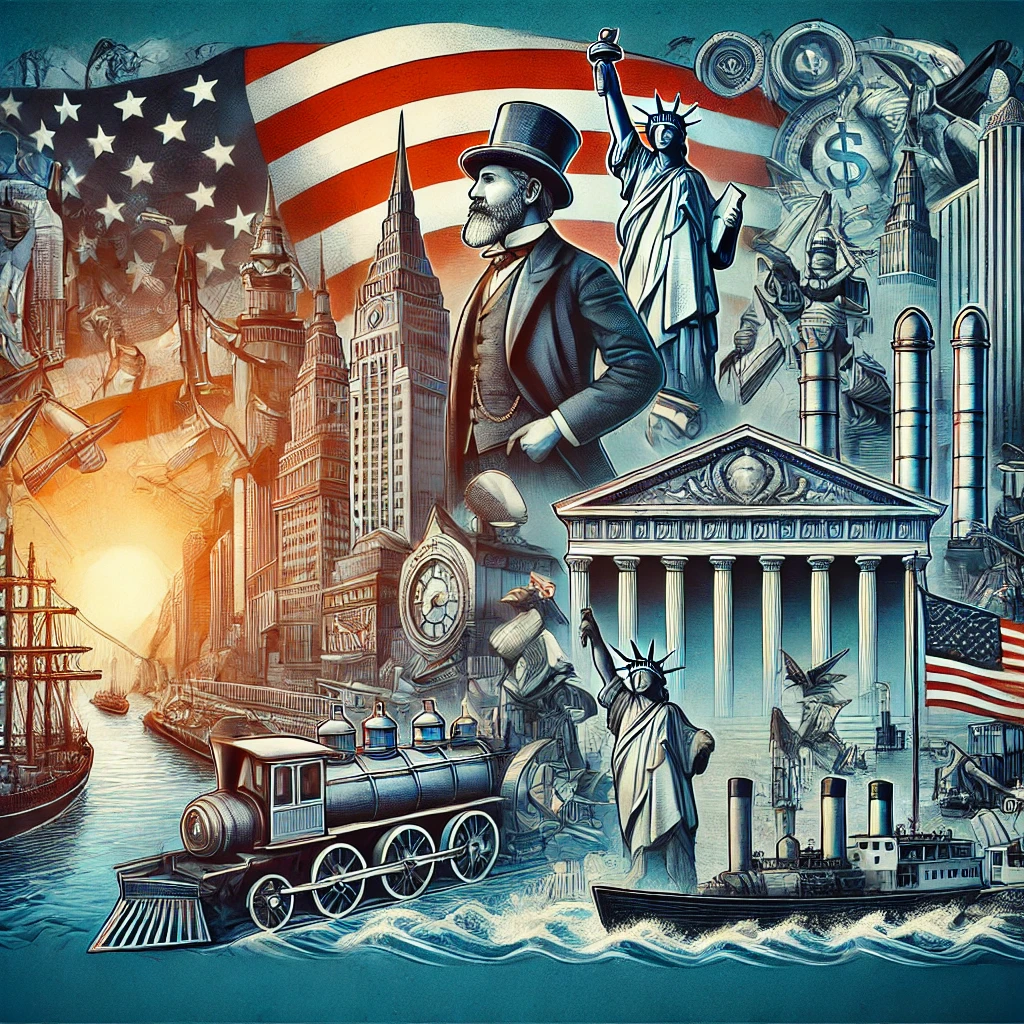The United States has long been recognized as the world’s leading economic powerhouse. Its rise to economic dominance was not accidental but the result of a combination of historical, geographical, political, and social factors. This blog will explore the key milestones and strategies that propelled the U.S. to the forefront of the global economy.

1. Geographical Advantages
The U.S. benefited greatly from its vast and diverse geography:
- Rich Natural Resources: Abundant reserves of coal, oil, natural gas, and fertile land for agriculture provided a solid foundation for industrial and agricultural growth.
- Strategic Location: Situated between the Atlantic and Pacific Oceans, the U.S. leveraged its geographic position for trade and naval power.
2. Industrial Revolution and Technological Innovation
- Early Adoption of Industrialization: By the late 19th century, the U.S. embraced mechanization and became a hub for manufacturing.
- Innovations in Technology: Breakthroughs like the assembly line (Henry Ford) and advances in electricity, telecommunications, and computing helped shape the modern industrial economy.
- Skilled Workforce: The U.S. attracted skilled immigrants, creating a labor force that contributed to rapid technological progress.
3. The Role of World Wars
The World Wars marked significant turning points for the U.S. economy:
- WWI: The U.S. emerged as a creditor nation, lending heavily to European powers.
- WWII: The war effort revitalized industries, created jobs, and left the U.S. as one of the few nations with an intact industrial base post-war.
- Post-War Dominance: Initiatives like the Marshall Plan cemented U.S. influence by helping rebuild war-torn economies while ensuring markets for American goods.
4. The Dollar as the Global Reserve Currency
- In 1944, the Bretton Woods Agreement established the U.S. dollar as the world’s primary reserve currency, backed by gold.
- Even after the gold standard ended in 1971, the dollar remained dominant due to the size and stability of the U.S. economy.
- Today, the dollar is integral to international trade, investments, and reserves.
5. Free Market Principles and Capitalism
The U.S. embraced capitalism as the backbone of its economy:
- Innovation-Driven Economy: Policies encouraging entrepreneurship fostered the growth of major industries.
- Corporate Giants: Companies like Microsoft, Apple, and Amazon have become global leaders, reflecting the success of the U.S. business environment.
- Financial Markets: Wall Street became the heart of global finance, attracting investments worldwide.
6. Investment in Education and Infrastructure
The U.S. prioritized foundational elements that fueled long-term growth:
- Higher Education: Institutions like Harvard, MIT, and Stanford became centers of innovation and skilled labor production.
- Infrastructure: Massive investments in roads, railways, and airports enabled efficient transportation and trade.
7. Immigration and Demographic Diversity
Immigration has played a crucial role in shaping the U.S. economy:
- A Growing Workforce: Immigrants brought skills, ideas, and labor to fuel industries.
- Diverse Innovation: A melting pot of cultures fostered creativity and new business ventures.
8. Globalization and Trade Policies
- Free Trade Agreements: Deals like NAFTA expanded U.S. trade and access to global markets.
- Global Supply Chains: American companies used their influence to build networks that kept them competitive on a global scale.
9. Military and Political Influence
- Military Power: The U.S. military ensures global trade routes remain open, safeguarding economic interests.
- Diplomatic Power: Strong alliances and influence in organizations like the United Nations have bolstered the U.S.’s global economic standing.
10. Adaptation and Resilience
The U.S. economy has weathered financial crises, recessions, and technological disruptions due to its adaptability:
- Economic Policies: Programs like the New Deal and stimulus packages during crises have helped stabilize the economy.
- Tech Leadership: The U.S. continues to lead in emerging fields like AI, biotechnology, and renewable energy.
Challenges and the Future
While the U.S. remains a leader, challenges like rising national debt, global competition from countries like China, and income inequality must be addressed to maintain its position. The focus on innovation, sustainability, and equitable growth will determine its future dominance.
Conclusion
The U.S.’s rise as the world’s economic leader is a testament to its strategic policies, entrepreneurial spirit, and ability to adapt. Its leadership is a combination of natural advantages, technological breakthroughs, and global influence. Understanding this journey offers valuable lessons for other nations striving for economic success.
